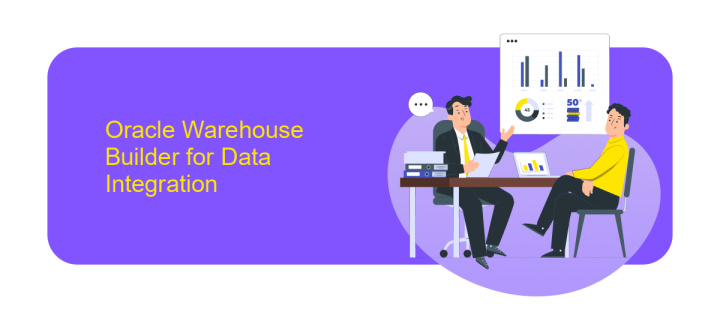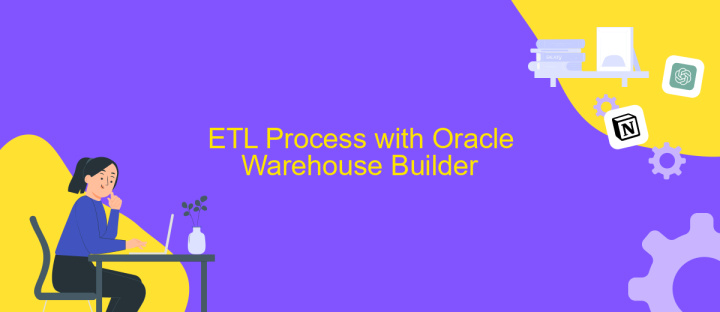Data Integration and ETL With Oracle Warehouse Builder
Data integration and ETL (Extract, Transform, Load) processes are critical for managing and utilizing vast amounts of data in modern enterprises. Oracle Warehouse Builder (OWB) offers a robust platform for these tasks, enabling seamless data integration, transformation, and loading. This article explores the capabilities, features, and best practices of using Oracle Warehouse Builder to optimize your data management workflows.
Introduction to Data Integration and ETL
Data integration is a critical process in the modern data landscape, enabling organizations to consolidate data from various sources into a unified view. This process not only facilitates better decision-making but also enhances data accuracy and consistency. Extract, Transform, Load (ETL) is a key component of data integration, involving the extraction of data from disparate sources, transforming it into a suitable format, and loading it into a target data warehouse or database.
- Extraction: Collecting data from multiple sources such as databases, cloud services, and APIs.
- Transformation: Cleaning, filtering, and structuring the data to meet business requirements.
- Loading: Inserting the transformed data into a target system for analysis and reporting.
Tools like Oracle Warehouse Builder streamline the ETL process by providing robust functionalities for data integration. Additionally, services like ApiX-Drive can simplify the setup of integrations by automating data flow between various applications and databases, ensuring seamless data transfer and synchronization. This combination of tools and services enables organizations to build efficient and scalable data integration solutions.
Oracle Warehouse Builder for Data Integration

Oracle Warehouse Builder (OWB) is a comprehensive data integration solution that facilitates the extraction, transformation, and loading (ETL) processes. It provides a robust platform for designing and deploying data warehouses, data marts, and business intelligence applications. OWB supports a wide range of data sources and destinations, enabling seamless data integration across heterogeneous environments. Its intuitive graphical interface allows users to design complex data workflows with ease, ensuring data consistency and accuracy throughout the ETL process.
In addition to its powerful ETL capabilities, OWB offers advanced features such as data profiling, data quality management, and metadata management. These features help organizations maintain high data quality and governance standards. For those looking to enhance their data integration efforts, integrating OWB with external services like ApiX-Drive can be beneficial. ApiX-Drive automates the integration of various applications and services, streamlining data flow and reducing manual intervention. By leveraging OWB and ApiX-Drive together, organizations can achieve a more efficient and reliable data integration process, ultimately driving better business insights and decision-making.
ETL Process with Oracle Warehouse Builder

Oracle Warehouse Builder (OWB) is a powerful tool for managing the ETL (Extract, Transform, Load) process, ensuring seamless data integration and transformation. The ETL process with OWB involves extracting data from diverse sources, transforming it to meet the target schema requirements, and loading it into the destination data warehouse. This process is essential for maintaining data integrity and consistency across the organization.
- Data Extraction: OWB connects to various data sources, including databases, flat files, and external systems, to extract raw data. The tool supports a wide range of data connectors, ensuring compatibility with different data formats.
- Data Transformation: Once the data is extracted, OWB provides robust transformation capabilities. Users can apply business rules, data cleansing, and aggregation functions to convert the raw data into meaningful information.
- Data Loading: Finally, the transformed data is loaded into the target data warehouse. OWB ensures that the data is accurately mapped and loaded, maintaining data quality and integrity.
For organizations seeking to enhance their ETL processes, integrating tools like ApiX-Drive can be beneficial. ApiX-Drive offers seamless integration capabilities, allowing businesses to automate data flows between various applications and services, further optimizing the ETL process with Oracle Warehouse Builder.
Benefits of Using Oracle Warehouse Builder for ETL

Oracle Warehouse Builder (OWB) offers a comprehensive solution for ETL processes, providing a robust environment for data integration and transformation. It simplifies the process of extracting, transforming, and loading data from various sources into a data warehouse, ensuring data consistency and quality.
One of the primary benefits of using OWB is its ability to handle complex data transformations with ease. The tool provides a graphical interface that allows users to design ETL processes visually, reducing the need for extensive coding. Additionally, OWB supports a wide range of data sources and targets, making it a versatile choice for diverse data environments.
- Efficient data integration and transformation
- Graphical interface for simplified ETL design
- Support for multiple data sources and targets
- Enhanced data quality and consistency
- Scalability for growing data needs
Furthermore, integrating OWB with services like ApiX-Drive can streamline the process of setting up data integrations. ApiX-Drive offers automated data transfer between various applications, enhancing the efficiency of ETL workflows. By leveraging OWB and ApiX-Drive together, organizations can achieve a more seamless and automated data integration process.


Conclusion
In conclusion, the Oracle Warehouse Builder (OWB) provides a robust and comprehensive solution for data integration and ETL processes. Its ability to handle complex data transformations, combined with its user-friendly interface, makes it an essential tool for organizations looking to streamline their data workflows. The integration capabilities of OWB ensure that disparate data sources can be effectively consolidated, providing a single source of truth for business intelligence and analytics.
Moreover, leveraging services like ApiX-Drive can further enhance the efficiency of data integration tasks. ApiX-Drive offers seamless connectivity between various applications and databases, automating the data transfer process and reducing manual intervention. This not only saves time but also minimizes the risk of errors, ensuring data accuracy and consistency. By integrating ApiX-Drive with Oracle Warehouse Builder, businesses can achieve a more agile and responsive data management system, ultimately driving better decision-making and operational efficiency.
FAQ
What is Oracle Warehouse Builder (OWB)?
How does ETL work in Oracle Warehouse Builder?
Can I automate data integration processes in Oracle Warehouse Builder?
What are the benefits of using Oracle Warehouse Builder for data integration?
Is Oracle Warehouse Builder suitable for real-time data integration?
Routine tasks take a lot of time from employees? Do they burn out, do not have enough working day for the main duties and important things? Do you understand that the only way out of this situation in modern realities is automation? Try Apix-Drive for free and make sure that the online connector in 5 minutes of setting up integration will remove a significant part of the routine from your life and free up time for you and your employees.

